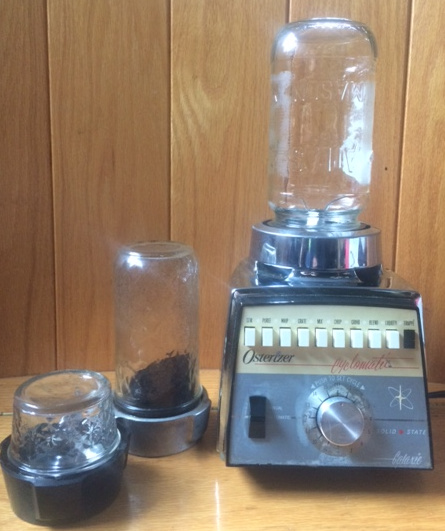Not a solution to my original question, but fits with the thread title…
Oster Blenders have the (unique?) feature of screwing into any size narrow mouthed mason jar. Which is really handy for grinding varying amounts of stuff with the same low cost tooling.
the one pictured is my coffee grinder at home. I paid $15 for it a St Vinnies. It came with the cast Alu base. I’ve got several more at work.
